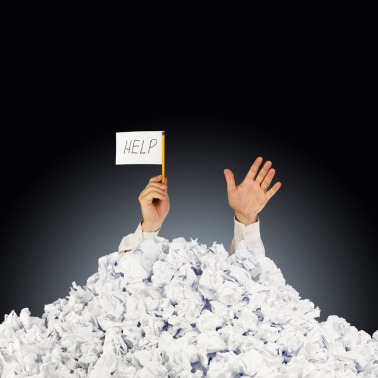Tips for Completing Social Work Paperwork

At its best, doing social work paperwork is a noble endeavor, a road map of what will be done with a client or documentation of what has been done. At worst, it can be a time consuming, complicated nightmare! We have all been there and we’re here to offer some basic tips on completing paperwork.
Social Work Paperwork Tips
1. Always remember that Social Work assessments and notes are legal documents. Yes, they do assist clients and do provide a plan and history for the social worker but never lose sight of the fact that they are open legal documents.
2. Never write anything in a note or assessment that you would not want read openly in court. For explanation, see tip one above.
3. Write social work documentation in third person.
4. Try as much as possible to keep your opinion out of it by stating facts only. This can be quite difficult because the documentation process is very much about what you see and how you interpret but it is best to state the facts as you see them.
5. Use “as reported by” when the client/consumer provides information that is beyond your scope of practice. For example, when medical ailments or medical issues are discussed you can state “client reported that she is diabetic,” or “client reported a medical diagnosis of rheumatoid arthritis.” This makes it clear that you are not the one diagnosing these ailments.
6. A treatment plan should be considered a legal contract between the social work service provider and (a) the client/consumer, and (b) the entity providing funding.
7. The treatment plan spells out clearly for both the client/consumer and the funder (a) what goals will be worked on, and (b) the clinical approaches that will be utilized.
8. Every treatment note should have at its core, (a) a clear statement about what goal(s) from the treatment plan were worked on in session, and (b) what clinical approach(es) was/were utilized. Remember that the clinical approached used must have been mentioned in the treatment plan.
9. Every note should also include a statement about who was present in the session and at least one quote from the primary client/consumer. The rational for this is because you can always prove who was in the session or not in the session if you routinely record it, and the primary client/consumer can be directly connected to the session with a quote.
10. It is also a strong suggestion to always include the session start and stop time as well as the date. This is so you can insure that you are not double billing if you are audited.
11. Notes generally can be written in two formats, both of which are acceptable and dependent on the agency. They cover the same reporting in different ways:
A. PIE notes, which means the note will cover section that include (Problem), (Intervention), and (Effectiveness or Evaluation).
B. SOAP notes, which means the note will cover sections that include (a Subjective general overview of the session), an (Objective overview of the session), and (Assessment of the session) and a future (Plan) of what will occur in the next week.
12. Regardless of document type it is helpful to write the note in as efficient a way as possible stating only the highlights of the session and details only when necessary to show completion of a treatment goal,decomposition, or any change in acuity.
13. Always report any issues regarding suicide or homicide and record (a) who was called, (b) the time of the call, (c) what was reported, and (d) be sure to include the name and contact information of the person with whom you spoke.
14. When discussing clinical interventions it can be helpful to create a separate keyword reference document for yourself. This is a form that you can keep for yourself that lists common techniques and phrases for the clinical approach being utilized. For example Cognitive Therapy could have the common words of “automatic thoughts,” Cognitive restructuring” and so on.
15. As much as possible try and write your notes directly after a session. Your mind is fresh and the note will be easier to write.
16. Finally, work at speeding up the time you spend doing social work documentation. Actively push yourself to develop a pattern of stating (a) who was present, (b) the goal(s) addressed, (c) the treatment(s) utilized, (d) a quote from the primary client/consumer, and (e) the general details of how what was discussed in the session.
Social Work documentation need not be painful and if you keep these tips in mind they can provide a framework for your documentation. A framework and guidelines can take the stress out of documentation because it simplifies the process and provides a clear template to structure your thoughts and your notes. We hope that these tips help to make your life a bit easier.

